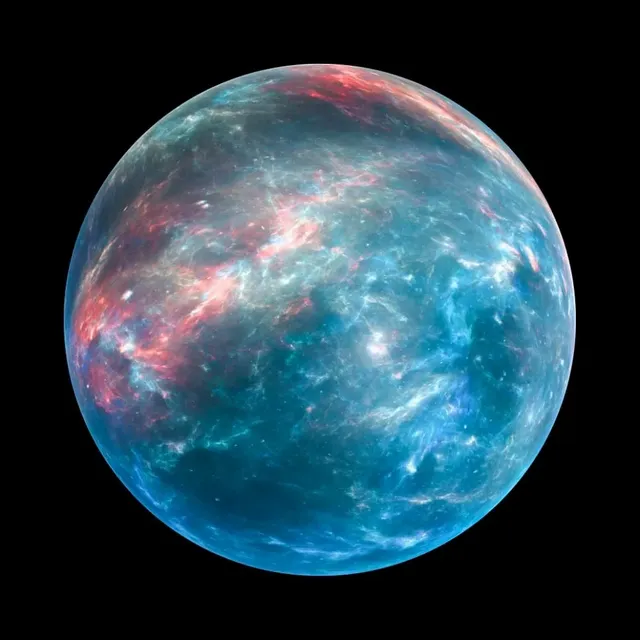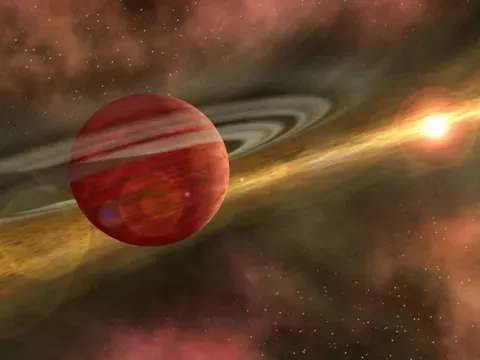Extrasolar planet, likewise called exoplanet, any planetary body that is outside the solar framework and that typically circles a star other than the Sun. Extrasolar planets were first found in 1992. More than 4,000 are known, and around 6,000 anticipate further affirmation.
Since planets are much fainter than the stars they circle, extrasolar planets are amazingly hard to identify straightforwardly. By a wide margin the best strategy for finding and considering extrasolar planets has been the radial velocity technique, which estimates the movement of host stars in light of gravitational pulls by their planets. Swiss stargazers Michel Mayor and Didier Queloz found the main planet utilizing this procedure, 51 Pegasi b, in 1995. (Civic chairman and Queloz won the 2019 Nobel Prize in Physics for their disclosure.) Radial speed estimations decide the sizes and states of the circles of extrasolar planets just as the lower furthest reaches of the majority of these planets. (They give just lower limits on planetary mass since they measure simply the segment of the star's movement toward and away from Earth.)

A corresponding procedure is travel photometry, which estimates drops in starlight brought about by those planets whose circles are arranged in space to such an extent that they intermittently pass between their stars and the telescope; travel perceptions uncover the spans of planets just as their orbital periods. Spiral speed information can be joined with travel estimations to yield exact planetary masses just as densities of traveling planets and in this manner limit the potential materials of which the planets are formed. Spectroscopic investigations that depend on varieties in the profundity of the travel with frequency have been utilized to recognize gases like hydrogen, sodium, and methane in the upper environments of some nearby in monster planets. The previously distinguished traveling planet was HD 209458b in 1999. Both spiral speed and travel strategies are generally touchy to enormous planets circling near their stars.
Three different strategies that have recognized extrasolar planets are pulsation timing, microlensing, and direct imaging. pulsation timing estimates the adjustment in distance between the sign source and the telescope by utilizing the appearance seasons of signs that are transmitted occasionally by the source. At the point when the source is a pulsar (a turning, polarized neutron star), current innovation can recognize movements in light of a planet whose mass is pretty much as little as that of Earth's Moon, though just monster planets can be distinguished around pulsating typical stars. The first extrasolar planets to be found were found in 1992 around the pulsar PSR 1257+12 by utilizing this strategy. Microlensing heaps of the gravitational twisting of light (anticipated by Albert Einstein's overall hypothesis of relativity) from a more removed source by an interceding star and its planets. This method is generally delicate to enormous planets circling countless kilometers from their star and has additionally been utilized to find a populace of free-gliding goliath planets that don't circle any star. Direct imaging should be possible by utilizing starlight reflected off the planet or warm infrared radiation produced by the planet. Imaging turns out best for planets circling those stars that are closest to the Sun, with infrared imaging being particularly touchy to youthful huge planets that circle a long way from their star.

So far scientists have categorized exoplanets into the following types: Gas giant, Neptunian, super-Earth and terrestrial. The planets past our solar framework are designated "exoplanets," and they come in a wide variety of sizes from gas monsters bigger than Jupiter to little, rocky planets probably as large around as Earth or Mars. They can be adequately hot to boil metal or locked in deep freeze. They can circle their stars so firmly that a "year" endures a couple of days; they can circle two suns immediately. Some exoplanets are dull mavericks, meandering through the system in perpetual obscurity.
Gas giants are planets the size of Saturn or Jupiter, the biggest planet in our solar framework, or a whole lot bigger. More assortment is covered up inside these general classes. Hot Jupiters, for example, were among the primary planet types found – gas goliaths circling so near their stars that their temperatures take off into the great many degrees (Fahrenheit or Celsius).
Neptunian planets are comparative in size to Neptune or Uranus in our solar framework. They probably have a combination of inside structures, yet all will have hydrogen and helium-ruled external airs and rough centers. We're likewise finding scaled down Neptunes, planets less than Neptune and greater than Earth. No planets of this size or type exist in our solar framework.
Super-Earths are regularly earthbound planets that might possibly have airs. They are more enormous than Earth, however lighter than Neptune.
Terrestrial planets are Earth measured and more modest, made out of rock, silicate, water or carbon. Further examination will decide if some of them have airs, seas or different indications of livability.
Special thanks to
@krytodenno
@seo-boss
@earnxtreme
@chorock
This post was resteemed by @steemvote and received a 3.31% Upvote. Send 0.5 SBD or STEEM to @steemvote
Downvoting a post can decrease pending rewards and make it less visible. Common reasons:
Submit